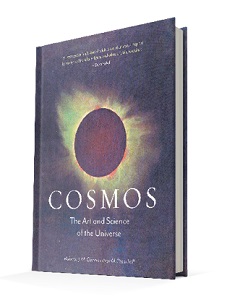The older one gets, the more it seems that CP Snow’s ‘two cultures’ paradigm, which postulated a division between science and the humanities, is becoming increasingly blurred – at least in the fields of space and astronomy. According to its publicity, this book “charts the human love affair with the heavens in art and astronomy, based on sound science and accurate art and cultural history”, which further erodes the notional boundaries.
This well-produced, glossy presentation features more than 300 colour images of artworks and astronomical photography that ably illustrate our collective fascination with what lies beyond our planet. Its 10 chapters cover the Sun, Moon, planets, comets, aurorae and many other subjects, concluding with some iconic spacecraft views. There is also a bibliography and an index.
Art curator, Olson, and astronomy professor Pasachoff, were brought together by the return of Halley’s Comet to the solar system in 1985 and have been collecting material for the book for over three decades. In fact, it was Olson who advanced the “widely accepted idea” that the object in the sky of Bondone’s ‘Adoration of the Magi’ was not the star of Bethlehem but “a portrait of Halley’s Comet during its 1301 apparition”. Indeed, the focus is on Western art, “where the tradition of representing astronomical phenomena has been more prevalent”, although the authors allude to works in other cultures too.
It’s not within the remit of this book - which covers ‘astronomy’ rather than ‘space’ - but it would be nice to see a companion edition from this publisher on the art and science of space travel, which would further meld those two cultures. Until then, this fascinating tome has an excellent story to tell.











